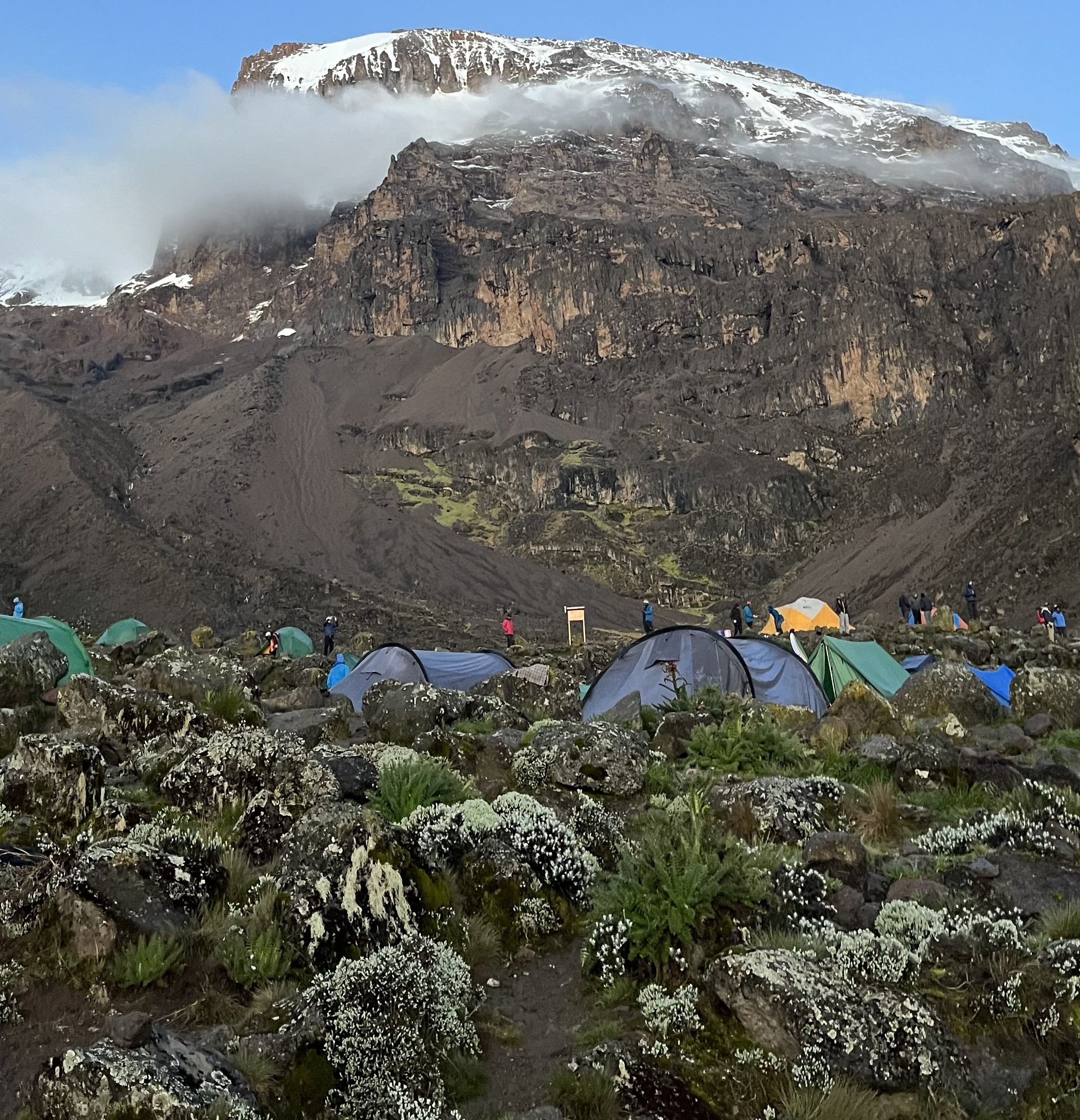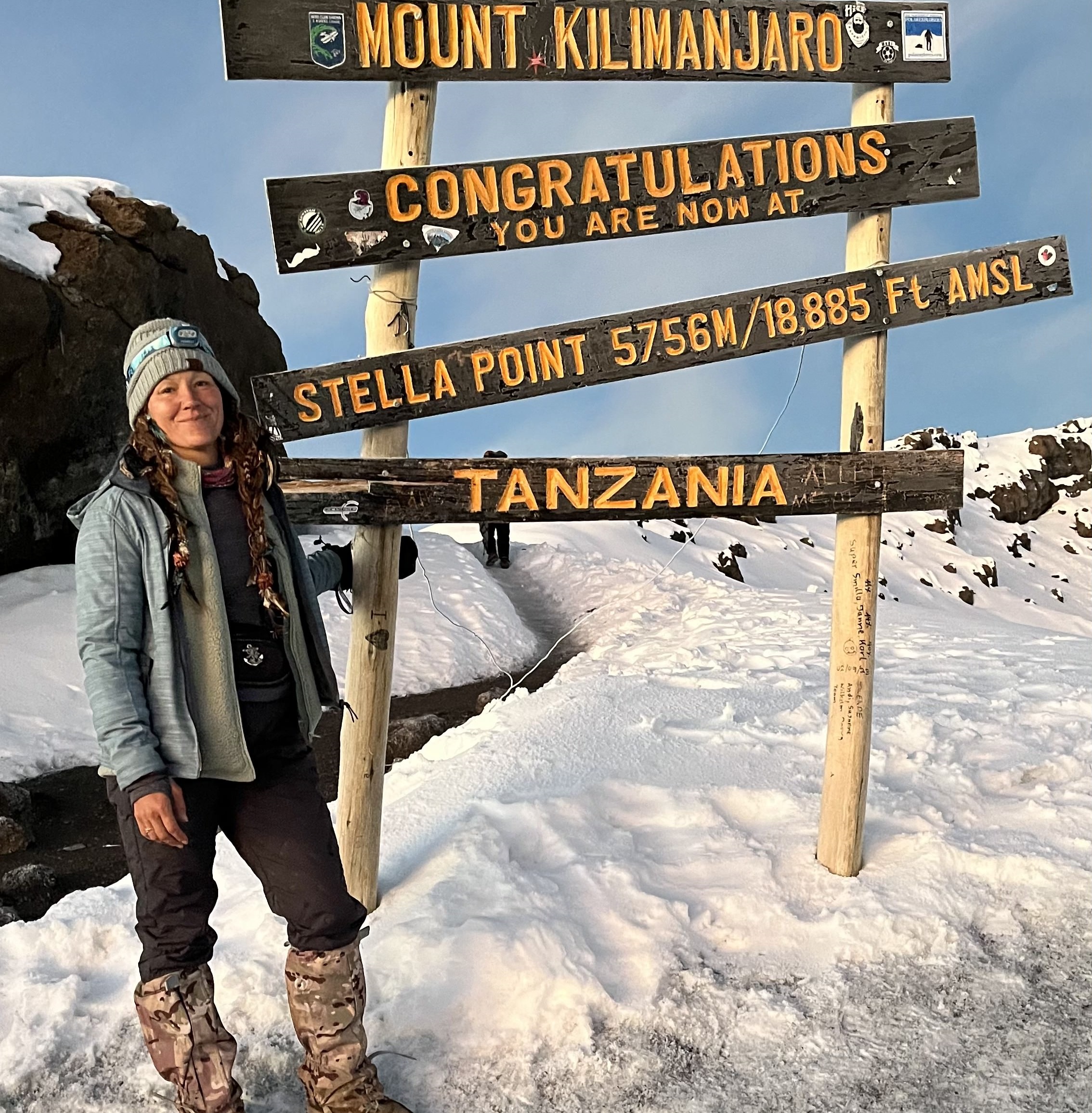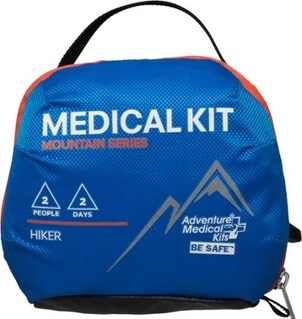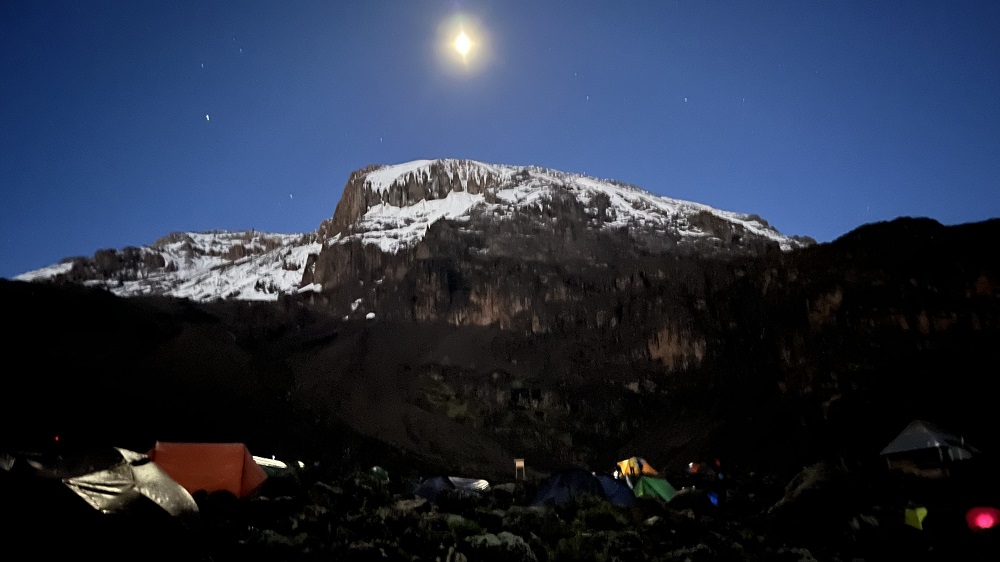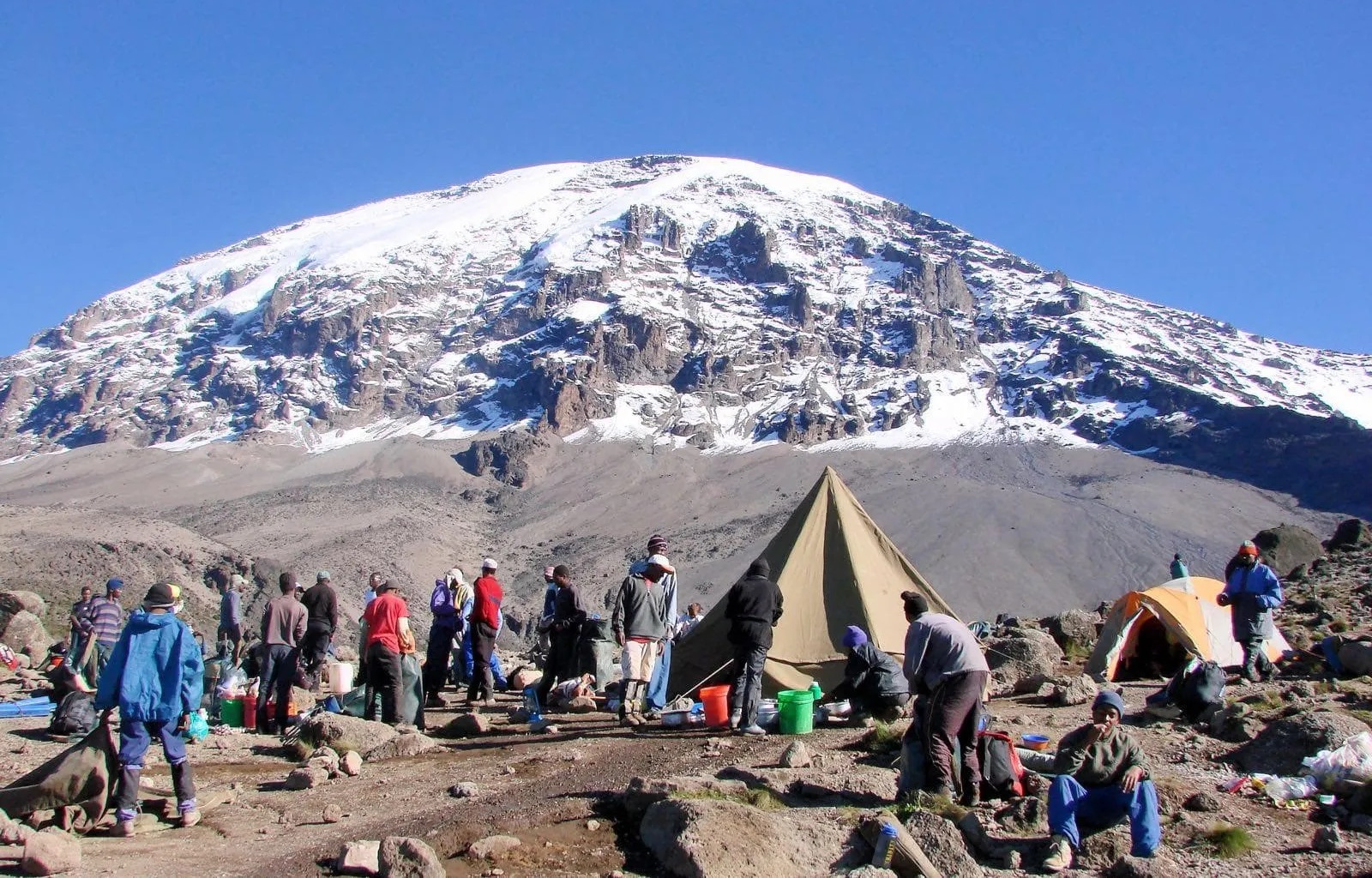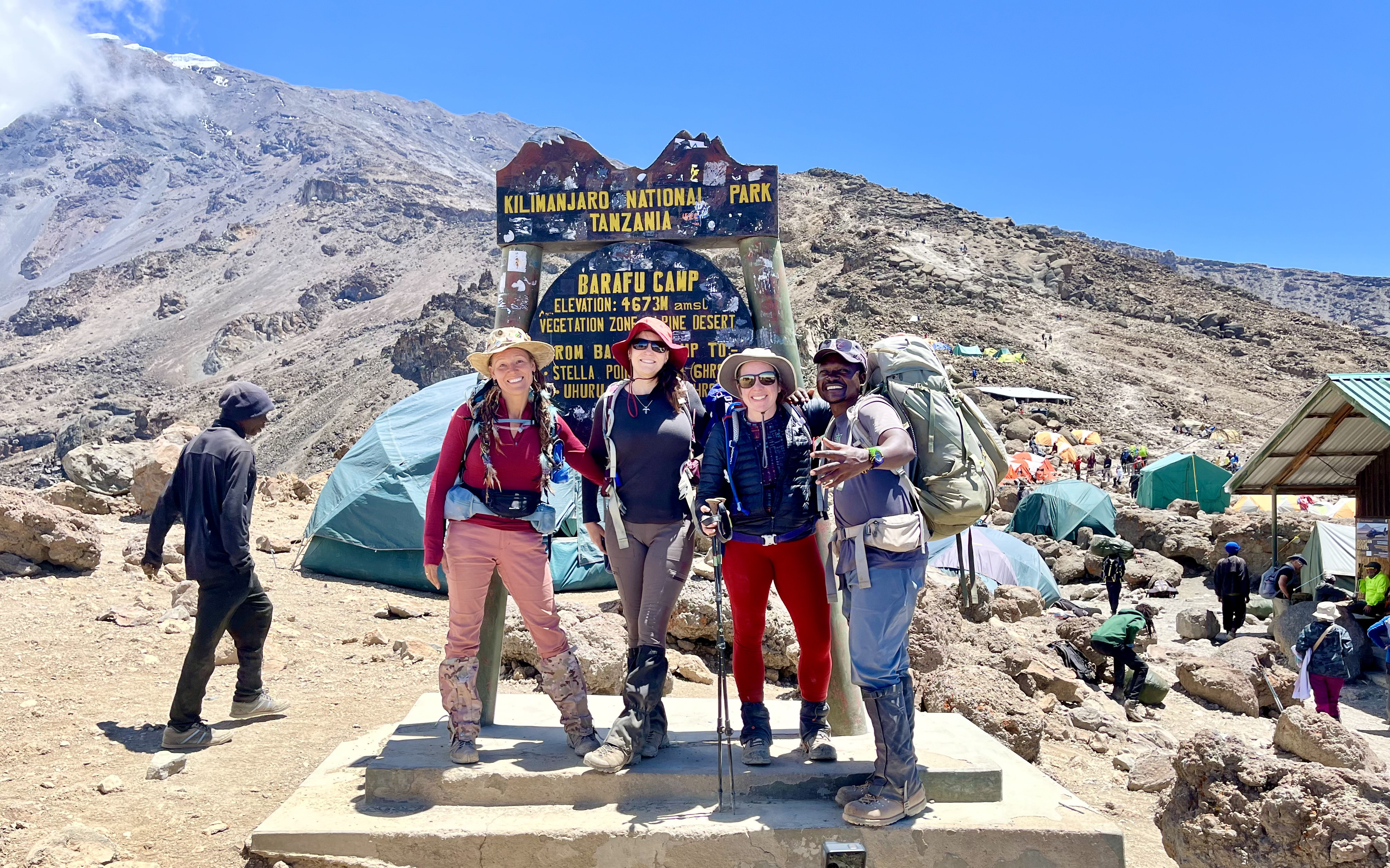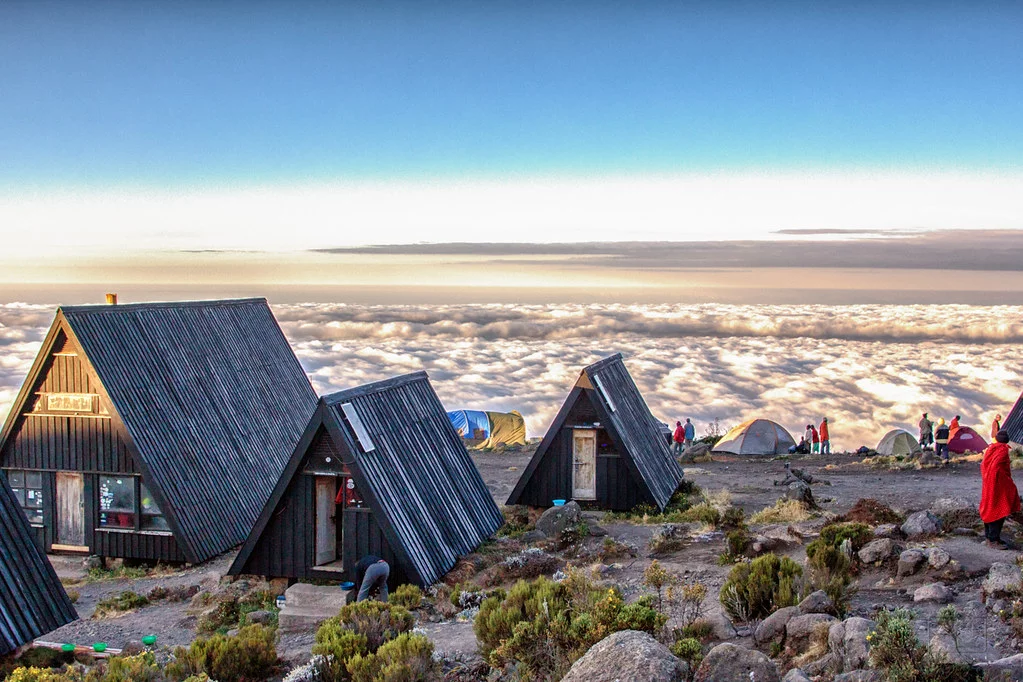KILIMANJARO WEATHER & CLIMATIC ZONES
Weather on Mount Kilimanjaro
The weather on Mount Kilimanjaro can change dramatically throughout the day, ranging from warm and sunny to cold and windy, even within the same 24 hours. Although the temperature does not vary much between seasons, it is heavily influenced by altitude and time of day.
At the base of the mountain, temperatures average between 21°C and 27°C (70-80°F). However, as you ascend, the temperature drops significantly. At Uhuru Peak, the summit of Kilimanjaro, nighttime temperatures can range from -7°C to -29°C (20°F to -20°F). Kilimanjaro's vast elevation (19,341 feet) and position on the equator create unique weather conditions, with the mountain often generating its own microclimates. The weather can be unpredictable, with sunny conditions, rain, wind, cold, and even snow.
While the "dry" seasons (June to October and January to February) are generally considered the best times to climb, rain and snow are possible year-round. As you climb, the temperature fluctuations can be extreme—one moment, you could be walking in sunshine, and the next, you may need to layer up against biting winds.
Snow on Kilimanjaro
Kilimanjaro's summit can experience snow, particularly during the long rainy season from March to May. During this time, moist trade winds from the southeast bring rain to the lower slopes and snow to the summit. These winds are heavily influenced by the Indian Ocean, and the southern slopes of the mountain receive the most rainfall. The shorter rainy season in November, which is influenced by dry winds from the northeast, brings lighter rains, mainly affecting the northern slopes.
Kilimanjaro's Temperature Zones
Due to its proximity to the equator, Kilimanjaro doesn’t experience extreme seasonal temperature changes. However, temperatures vary greatly depending on your altitude and the time of day. At the base, you’ll encounter tropical warmth, but as you ascend through the mountain's five ecological zones, temperatures decrease significantly. The summit, located in the arctic zone, is bitterly cold, and hikers should be prepared for freezing nights.
Kilimanjaro Weather Through the Climate Zones
As you ascend Mount Kilimanjaro, you'll experience significant changes in weather, passing through several distinct climate zones.1. Cultivation Zone
• Altitude: 2,600 to 6,000 ft (800 to 1,800 m)
• Precipitation: 20 to 70 in (500 to 1,800 mm)
The base of Kilimanjaro is surrounded by the cultivation zone, a region of fertile farmland thanks to the volcanic soil. This area experiences ample rainfall and mostly temperate conditions. You'll pass through this zone on your way to the trailhead.
2. Forest Zone
• Altitude: 6,000 to 9,200 ft (1,800 to 2,800 m)
• Precipitation: 79 to 40 in (2,000 to 1,000 mm)
The climb begins in the montane forest, a tropical rainforest that captures much of the mountain's moisture. Conditions here are warm and humid, with thick cloud cover and frequent mists beneath the dense canopy. The ground can be muddy, and you’ll encounter streams and springs formed by the absorbed moisture.
3. Heath/Moorland Zone
• Altitude: 9,200 to 13,200 ft (2,800 to 4,000 m)
• Precipitation: 51 to 21 in (1,300 to 530 mm)
As you leave the forest behind, you’ll enter the Heath and Moorland Zone, where the terrain shifts to tall grasses and giant heathers. The climate is more exposed, with less humidity and drier trails. While temperatures remain warm during the day, they drop significantly at night. The sun can be harsh, so sunscreen is a must.
Rain is infrequent but possible, and the cooler, drier conditions make for a more comfortable hike compared to the forest.
4. Alpine/High Desert Zone
• Altitude: 13,200 to 16,500 ft (4,000 to 5,000 m)
• Precipitation: 10 in (250 mm)
Climbing higher, you’ll enter the High Desert Zone, characterized by arid conditions and small, hardy plants. Wind speeds increase, and rainfall is scarce. During the day, temperatures can still be warm, but they plummet quickly at night.
Here, you’ll often camp above the clouds, offering breathtaking views under clear, starlit skies. The trails become dustier, and the air thins, making it harder to breathe.
5. Arctic Zone
• Altitude: 16,500+ ft (5,000+ m)
• Precipitation: 4 in (100 mm)
Above 16,500 ft lies the Arctic Zone, a barren, rocky region with little rainfall, most of which falls as snow. This zone is also known as the Summit Zone. The air here has about 49% of the oxygen found at sea level, and the harsh conditions make it an extreme environment.
Expect very cold temperatures, blustery winds, and freezing conditions, even during the day. The terrain is rocky, with volcanic scree and glaciers. As you approach the summit, be prepared for ice and snow underfoot, and make sure to wear warm layers to protect against the bitter cold.
Sunscreen is essential, as the sun’s radiation is intense, and the dry air can lead to dehydration. You’ll need to be prepared for both extreme cold and harsh sun exposure.
